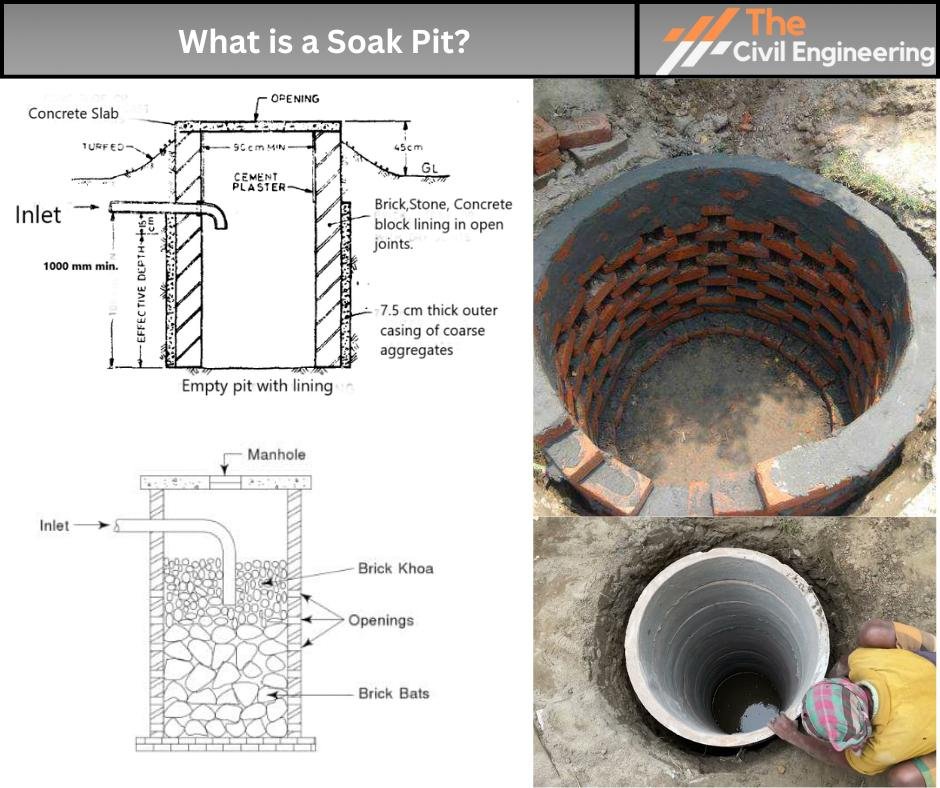A soak pit is a porous, enclosed chamber connected to a primary treatment unit, such as a septic tank, allowing wastewater to percolate underground.
✔ It is also called a soak way/leach pit/ seepage pit.
✔ It is a commonly used technique for discharging wastewater underground.
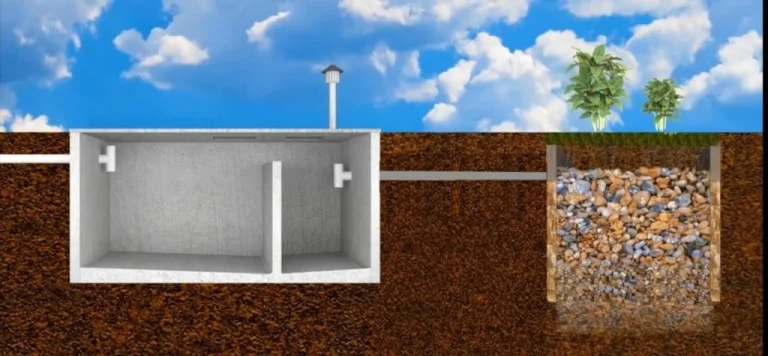
✔ A soak pit is a relatively efficient construction that allows wastewater collected in a septic tank or even a specific type of latrine to infiltrate deep into the ground when it is not planned for reuse.
As the wastewater penetrates the ground, smaller particles are filtered by the soil’s matrix, while the organic waste present in the wastewater is decomposed and digested by the soil’s microorganisms.
✔ It is most suitable in places where the soil is highly porous.
✔ A well-constructed soak pit can last a minimum of 3 to 5 years.
✔ If constructed with proper design and over highly porous soil, it may last up to 10 years or more. This value also depends upon the number of users.
( For example, if the soak pit is designed for 10 users but only 5 people live in the home, then its life will be longer.)
1. Needs of Soak Pit
✔ The wastewater, also known as greywater, is collected from the primary treatment unit of a building, such as a septic tank, settler, twin-pit latrine, etc. Since the collected water is impure and cannot be allowed to percolate directly into the ground, a certain degree of treatment must be provided before it is allowed to settle.
For such partial treatment, a soak pit is generally provided.
✔ The wastewater infiltrated from the soak pit can recharge groundwater.
2. Design of Soak Pit
a. The design of a typical soak pit generally consists of a pit of approximately 1 cubic meter with a depth of 1.5m to 4m.
The soak pit may be circular or rectangular. However, more than 99% of soak pits are generally circular when working in the field.
We commonly utilize circular precast concrete rings to maintain budget and ease of construction, as shown in the figure below.
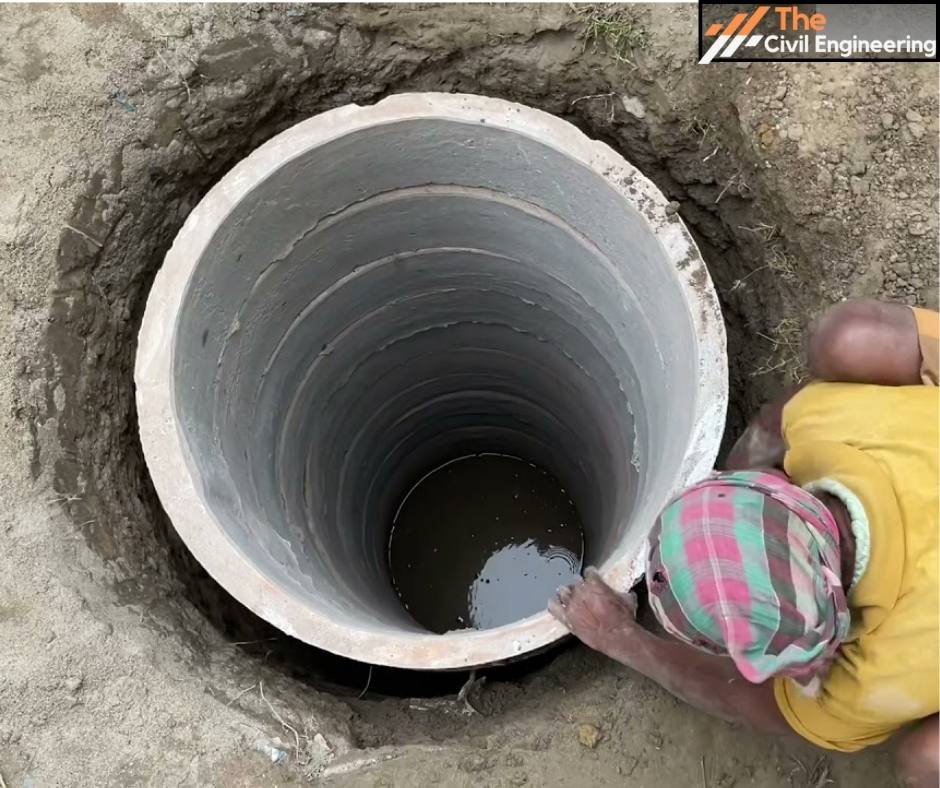
We use the brick to construct a soak pit in case of the unavailability of concrete rings.
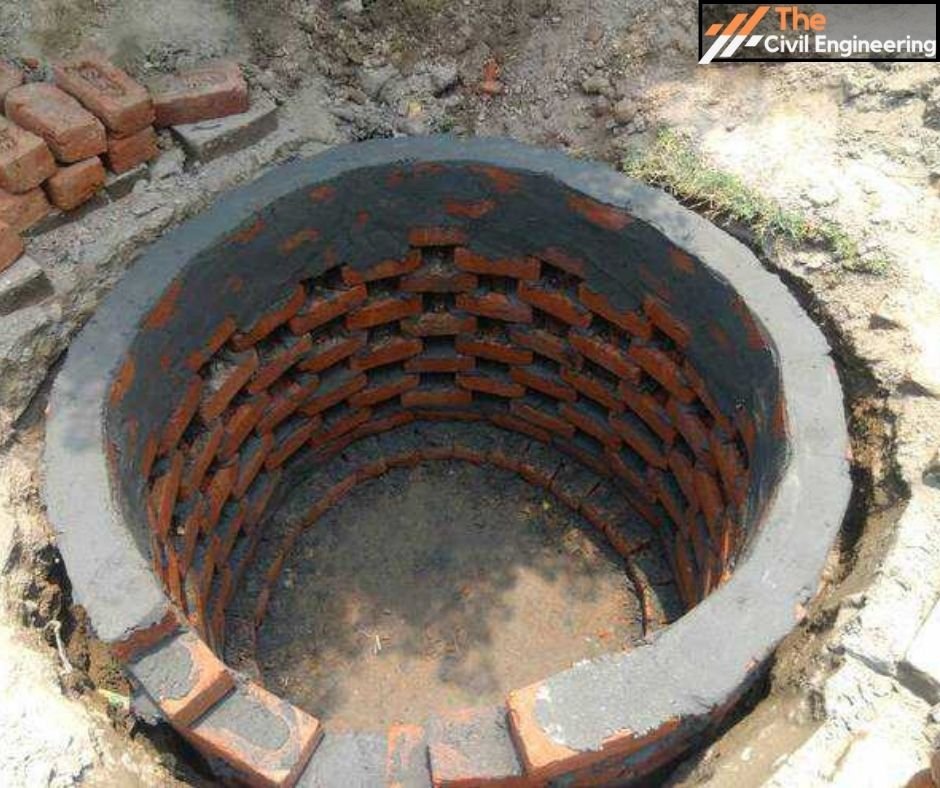
b. It must not be constructed near a drinking water source as it can contaminate it.
c. It must be constructed at least 30 m from a drinking water source.
d. It must be noted that the soak pit is not constructed in an area subjected to a high volume of traffic as it may cause compaction of the pit.
e. A thin layer of sand and gravel may be provided at the bottom of the pit to disperse the wastewater flow.
f. A concrete lid must be constructed to cover the soak pit.
3. Functions of a Soak Pit
1. It serves a receiver function and collects the wastewater from the primary treatment units like septic tanks.
2. It allows the collected wastewater to get purified to some extent.
3. It thus allows non-harmful water to infiltrate into the ground.
4. It thereby helps in the recharge of groundwater.
| Read Also: 15+ Engineering Drawing Instruments With Images. |
4. Types of Soak Pit
i. Lined Soak Pit
✔ A lined soak pit is used when the inner volume is kept empty.
✔ The lining may be of bricks, stones, or concrete rings, with dry open joints and at least 7.5 cm backing of coarse aggregate.
✔ This pit is also known as an empty soak pit.
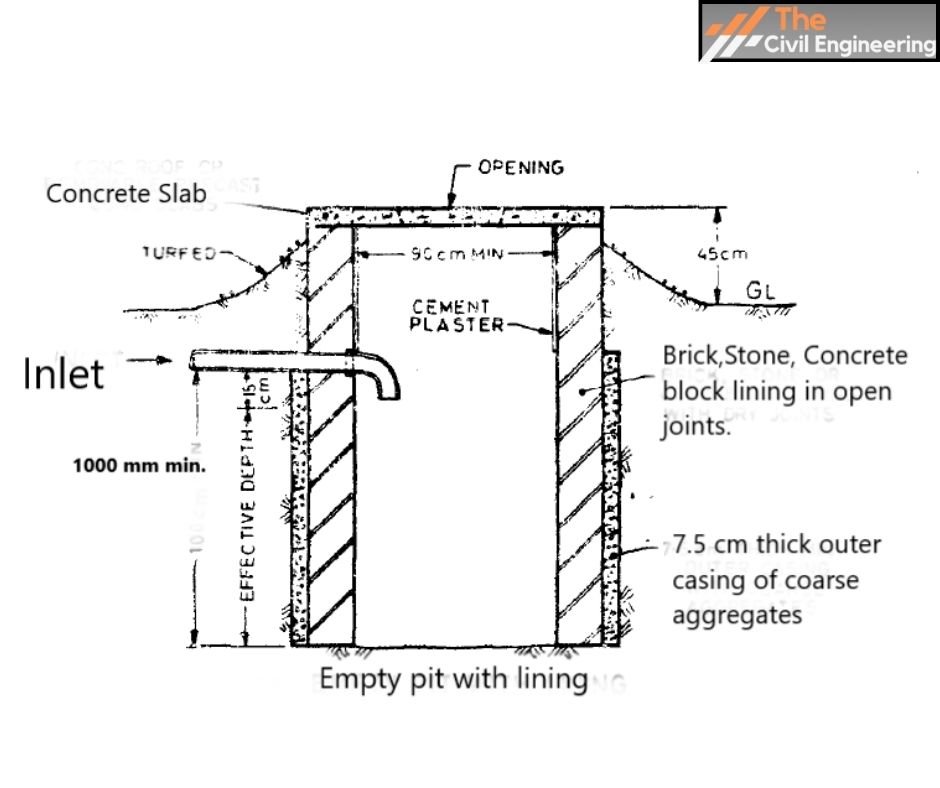
ii. Unlined Soak Pit
✔ If the inner volume is filled with stone and brick aggregates, no lining is required except for the masonry ring provided at the top. Such a soak pit is named an unlined soak pit.
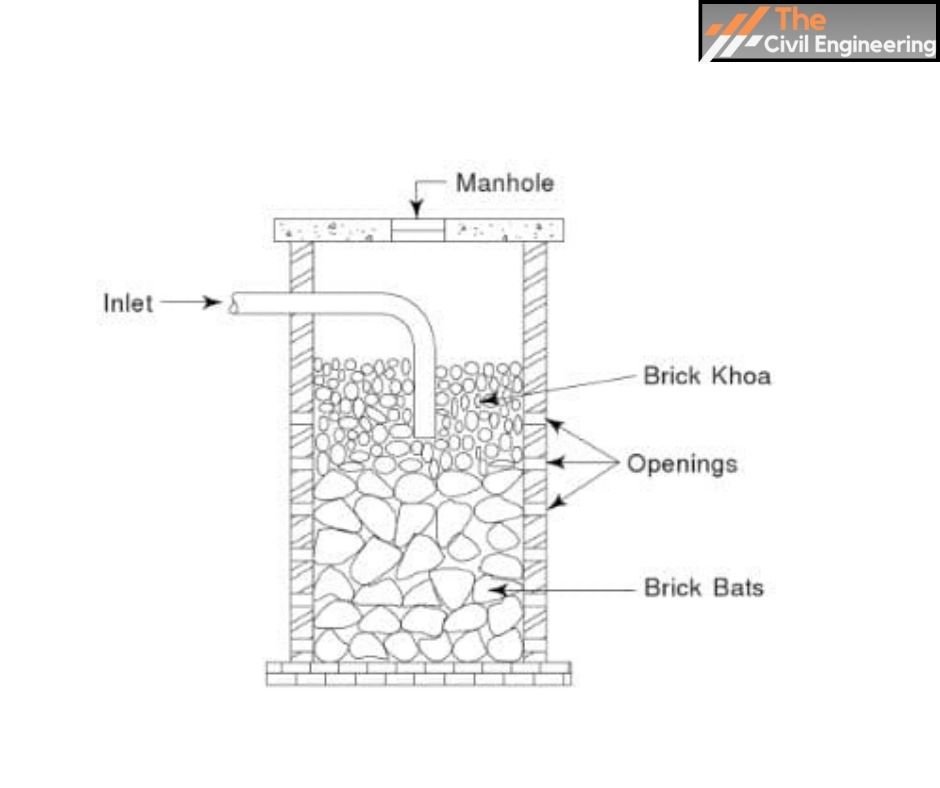
5. Operation / Maintenance
∼ Without maintenance, a well-sized soak pit should last 3 to 5 years.
∼ It is essential to keep the soak pit away from high-traffic areas and avoid compacting the soil to prevent clogging due to particles and biomass, which may require cleaning or relocation.
∼ After some time, when the soak pit deteriorates, the material inside it can be excavated and refilled.
∼ A removable lid should be provided so that it can be easily maintained.
6. Health Aspects
∼ Since the soak pit is mainly constructed underground, there is less chance of coming in contact with humans and animals.
∼ It should be at a safe distance from drinking water sources. So, it should be located at least 30 m (100′ ) from the water tank. ( if not possible, a minimum of 10 m at any condition).
∼ It can be constructed in the most sensitive communities because it is usually odorless and not visible.
7. Factors Affecting The Filling Period
a. Nature of soil
If soil is highly porous, the leach pit lasts longer and vice versa.
b. Number of users and designed users
If actual users are less than designed users then the leach pit lasts longer.
8. Advantages of Soak Pit
1. It is a relatively simple and easy technique.
2. The construction is simple, and locally available materials can be used.
3. It requires only a small area.
4. The initial cost, as well as the operation cost, is affordable.
5. It helps in the recharge of groundwater bodies.
9. Disadvantages of Soak Pit
1. It is applicable only in areas where the soil is porous and allows the percolation
of wastewater.
2. It is not suitable for highly congested areas.
3. There is a high risk of clogging without primary treatment.
4. It is not suitable for cold climatic conditions.
| Written By Er. Madhu Krishna Poudel |
| Verified By Er. Surakchya Gynawali |

